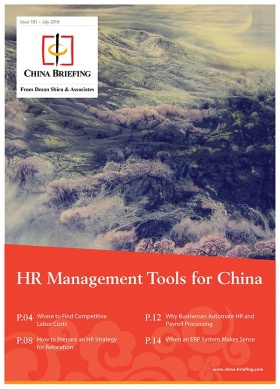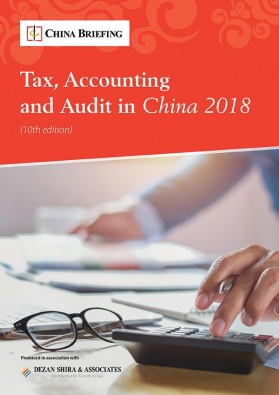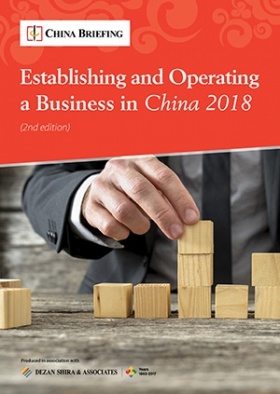China’s Tax Bureau to Collect Social Insurance
Earlier this year, the Chinese government announced the most comprehensive and sweeping restructuring of its government institutions in decades. The reshuffle, which was officially passed by the National People’s Congress (NPC) on March 17, 2018, created seven new ministries and affected the structure of almost every national-level government agency.
With the changes, the tax bureau will become solely responsible for social insurance from 2019, instead of the HR bureau, which was previously responsible for it in many regions. The consolidation of responsibilities under a better-equipped tax bureau will increase China’s capacity and willingness to enforce its social insurance regulations more uniformly.
At the same time, China is working to reduce employers’ social insurance obligations, most notably via an April directive to local governments to formulate plans to reduce social insurance rates.
Taken together, China is simultaneously increasing its capacity to collect social insurance while also decreasing the amount of social insurance that businesses need to pay.
What should HR and payroll managers make of China’s recent changes to its social insurance policies?
Institutional reform
Broadly speaking, China’s institutional reform plan aims to streamline government agencies by eliminating bureaucratic overlap and making different agencies’ responsibilities more logical, as well as increasing the central government and Communist Party control over regional governments.
The changes can be seen within the context of Chinese President Xi Jinping’s idea of “socialist rule of law with Chinese characteristics”, which he presented at the 19th Party Congress in October 2017. This idea espouses more strict and consistent enforcement of existing laws across the country, and less regional variation.
The reform of the tax bureau’s structure and responsibilities is a clear example of these policy priorities.
Since China passed the institutional reform plan at the NPC, the government has released several notices outlining the new roles and responsibilities of various government agencies in greater detail.
Among these announcements was the Plan for Deepening Reform of Party and State Institutions, released by the Chinese Communist Party’s Central Committee on March 21, 2018.
Article 46 of the plan provides that “The basic endowment insurance premiums, the basic medical insurance premiums, the unemployment insurance premiums and other social insurance premiums shall be uniformly collected by the tax department.” Article 46 makes it clear that the tax bureau is the sole bureau in charge of collecting social insurance premiums across the country.
Previously, the 1999 Provisional Regulations for the Collection and Payment of Social Insurance Premiums provided that either the social insurance agency under the HR bureau or the tax bureau could collect social insurance premiums. This ambiguity resulted in considerable regional variation.
Besides removing this ambiguity, other changes to the tax bureau’s structure stand to increase its enforcement capabilities.
Most notably, national- and local-level tax bureaus in all regions were merged, as of June 15, 2018. The consolidation of different levels of tax bureaus is another move to centralize and standardize their administration and should lead to less regional policy variation.
Furthermore, Leading Party Groups within the tax bureau were altered to Party Committees, which increases the authority of Communist Party representatives, compared to state bureaucrats. Again, this change allows for stricter implementation of national-level policy.
Additionally, compared to the HR bureau, the tax bureau is a larger and better-equipped agency for carrying out social insurance collection.
Lowering social insurance premiums
While changes to the tax bureau suggest that enforcement of companies’ social insurance obligations will become stricter, China is simultaneously lowering social insurance premiums across the country. As with the reforms to the tax bureau, the lowering of social insurance premiums can be understood within a wider policy context.
A result of years of rapid economic growth, land and labor costs in China have greatly increased, outstripping gains in productivity. This has further slowed down the Chinese economy due to competition from lower-cost jurisdictions like Vietnam and Indonesia.
To deal with these issues, China has been undertaking a multi-year campaign to improve its business environment and lower costs for employers. For example, earlier this year, China pledged to cut taxes for businesses and individuals by RMB 800 billion (US$116.51 billion) in 2018, including by reducing its value-added tax (VAT) rates.
In China, employer social insurance contributions are a significant expense for businesses – and therefore, another area that the government has targeted for cost alleviation.
On April 20, 2018, the Ministry of Human Resources and Social Security and the Ministry of Finance jointly released the Notice on Continuing to Reduce Social Insurance Premium Rates Periodically, which came into effect on May 1, 2018. According to the notice, local governments shall make specific plans to reduce social insurance rates.
Since then, several regions have followed through. For example, on May 17, 2018, Shanghai issued a circular to reduce social insurance rates in the city – including reducing the employment insurance basic rate in several industries by 50 percent, effective from May 1, 2018 to April 30, 2019.
Besides reducing costs on businesses as a means to stimulate the economy, the lowering of social insurance premiums works in concert with the changes to the tax bureau. Thus while China is signaling its intent to take social insurance violations more seriously, it is also lowering the bar for businesses to comply. Doing so widens the tax base and encourages compliance among companies that previously may have skirted their obligations because of high costs.
Steps HR and payroll managers should take
The changes to China’s social insurance policies mark a logical opportunity for businesses to conduct an internal HR and payroll compliance review.
China’s social insurance system consists of five different kinds of insurance – pension, medical, unemployment, maternity, and work injury – as well as a housing fund. Contribution rates vary widely according to the region, but the average contribution rate for employers is 37.25 percent of the employee’s salary.
Theoretically, all businesses in China should already be contributing social insurance in accordance with the law. In practice, however, some companies might have agreements with employers that contravene social insurance rules.
For example, in the past it was not uncommon for employers to pay employees a higher salary in exchange for reporting a lower salary for them on paper, meaning the employer’s total costs would be reduced because of lower social insurance obligations. Even if an employee willingly agrees to such an arrangement, it is illegal and can expose the employer to a labor dispute.
In other cases, an employer might agree with an employee to pay their social insurance obligations in a different city where the employer has another branch or subsidiary. This is another type of behavior that regulators may scrutinize more closely going forward.
Failure to comply with social insurance regulations exposes employers to a variety of risks. If an employer does not make the full social insurance payments that they are obligated to pay, employees can terminate their employment contract without prior notice.
Further, such an employee would have strong grounds to sue the employer in a labor dispute. This includes cases where there is evidence of an employee agreeing to an arrangement that would skirt social insurance obligations.
Additionally, regulators might deem repeated violation of social insurance regulations as “seriously dishonest behavior”, which could expose businesses to fines, blacklists, and potentially harsher penalties.
Businesses that already believe themselves to be compliant are also advised to conduct an HR health check to ensure their affairs are in order as they face tighter scrutiny. Businesses should analyze, among other things, salary and overtime payments, social insurance contributions, work hour systems, work safety requirements, and annual leave and holiday policy.
Further, already-compliant businesses located in regions where social insurance was collected by the HR bureau should prepare to create a positive working relationship with the tax bureau. Businesses can contact their local tax bureau to check in on updated policies and ask questions.
Businesses should also note that, given the ongoing restructuring of government institutions, there may be a transition period where local bureaus themselves might be unsure of some of their new processes and responsibilities.
From a broader cost perspective, while reduced social insurance obligations will lower costs for employers, businesses should note that labor costs in China will continue to be on an upward trajectory. Workers in Beijing, for example, now make an average of about RMB 8,500 per month, and wages will rise year-on-year.
However, stricter enforcement of social insurance rules may help level the playing field between Chinese and foreign companies. Historically, domestic companies have been more likely than foreign companies to skirt their social insurance obligations, resulting in lower costs for the former.
Now, both foreign and domestic companies will be under greater pressure to comply with not only social insurance obligations, but many other laws and regulations that were previously enforced sporadically or inconsistently.
This article was originally published in the September 2018 edition of the Hong Kong Institute of Human Resource Management‘s Human Resources Magazine.
About Us
China Briefing is produced by Dezan Shira & Associates. The firm assists foreign investors throughout Asia and maintains offices in China, Hong Kong, Indonesia, Singapore, Russia, and Vietnam. Please contact info@dezshira.com or visit our website at www.dezshira.com.
- Previous Article Export Tax Rebates in China Increase for 397 Products
- Next Article Investing in Guangdong Easier for Foreign Firms after New Incentives Announced










